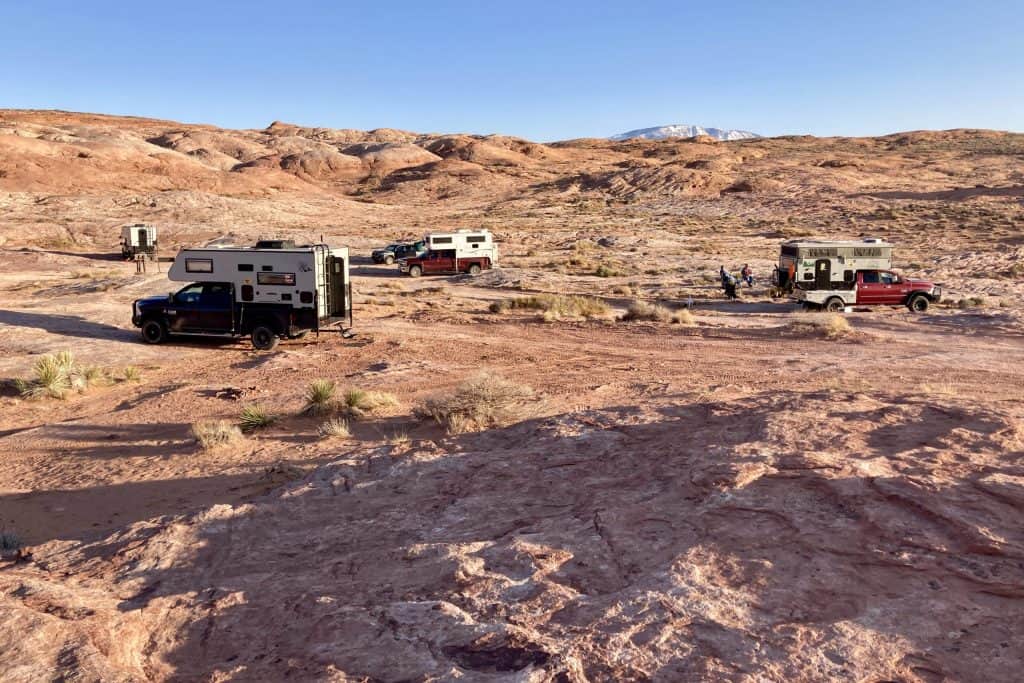Those who like boondocking in an RV are all the rage when it comes to going lithium.
The lithium battery not only has a 90 percent useable battery capacity (compared to a lead-acid battery’s 50 percent), but it is also 50 percent lighter, has a greater current and voltage output, and charges more quickly since it can be “bulk” charged to 97 percent.
Unfortunately, there is a lot of false information available on how to maintain and charge a lithium ion battery.
Because of the drawbacks of lead-acid batteries, established behaviors have developed over time.
Contrary to popular belief, charging a lithium battery is not the same as charging a lead-acid battery.
We’ll discuss these discrepancies in this post since they are rather important.
In fact, if these variances are not addressed, they may shorten the life of the lithium battery.
All things considered, it’s incredible that lead-acid batteries have been used in RVs for so long.
It has a limited lifespan, charges slowly, stores very little energy, and requires a full charge to avoid sulfation.
The battery’s available capacity diminishes as the rate of discharge rises, according to Peukert’s Law, and it is heavier than lithium and has voltage sag (at 50 percent the lead-acid voltage typically drops to 11.9 volts).
Truck camper battery compartments generally only hold two group-27 lead-acid batteries due to space constraints.
Although the average group-27 battery is listed at 100 amp hours, only 50% of each battery is really useable, so you’ll actually need two to achieve that much useful capacity.
Two batteries are still insufficient for some people.
Running a generator is often required if a high amperage load is required, such as a microwave, hair dryer, or induction cooktop.
Ugh.
The lithium-ion battery comes into play.
You may power the aforementioned loads with a suitable sized inverter—we use a 3,000 watt pure sine wave unit in the Roadrunner—and one or more lithium iron phosphate (LiFePO4) batteries.
Our 12 volt Expion 360 amp hour LiFePO4 battery generates as much power as seven 100 amp hour group-27 lead-acid batteries when compared to lead-acid! It does this while using barely a third of the area and weighing only 95 pounds.
It also has a longer lifespan—between 2,000 and 5,000 cycles—than a typical lead-acid/AGM battery.
Furthermore, our Expion 360 amp hour lithium battery continues to produce an astounding 12.9 volts at a 30 percent state of charge (SOC).
For those who like boondocking, the lithium battery is a game-changer when paired with a strong solar power system.
Don’t simply purchase any lithium ion battery, however.
Purchase one that is well-made and has a battery monitoring system (BMS).
Numerous tasks carried out by the BMS are essential for maintaining the battery’s health and lifetime.
It also calculates the battery’s SOC, checks the temperature, stops charging when the battery is below 32 degrees, and monitors the battery’s health and safety by looking for loose connections and internal shorts.
Additionally, the BMS balances the charge between the cells to maintain each cell’s optimal performance.
Battle Born, Expion360, LifeLine, and RELiON are the manufacturers of the top 12 volt lithium ion batteries for recreational vehicles.
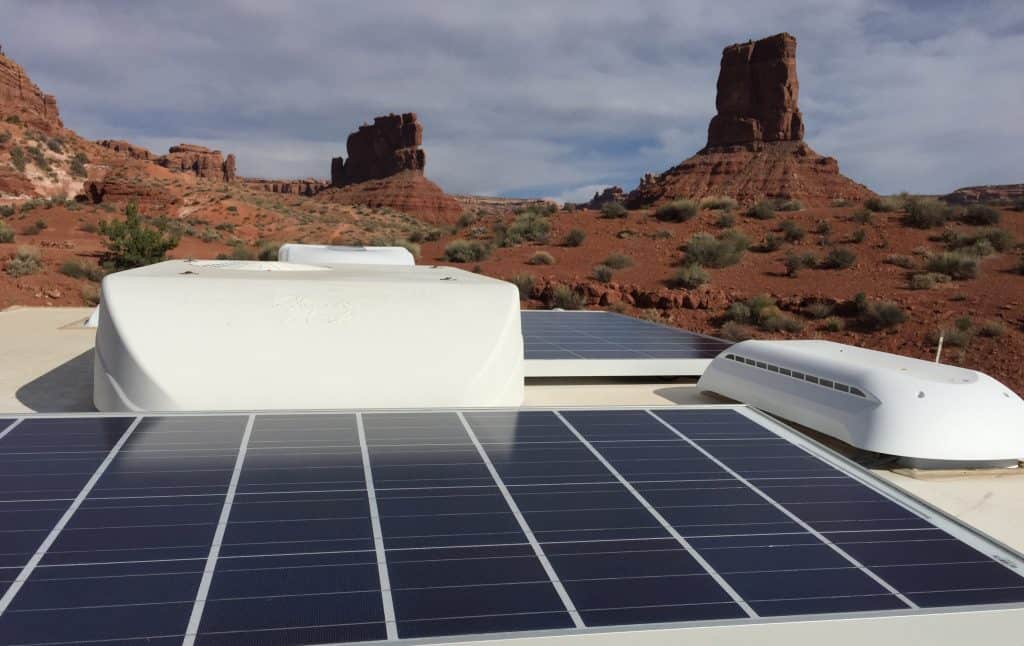
The lithium ion battery has various drawbacks, which is unfortunate.
Always charge lithium batteries at temperatures above 32F.
This might do it irreparable harm.
Yes, a lithium battery may be used below 32°F, but it cannot be charged at this temperature.
Fortunately, a BMS is included into the majority of lithium batteries being produced today to prevent charging below freezing.
This is another reason why many owners of lithium batteries choose to keep them inside the camper rather than in a container outside where they can be subjected to considerably colder temperatures.
This cost is still seven to nine times more than a typical wet cell lead-acid battery, even if it contains the necessary BMS.
Additionally, this greater cost does not account for the charging equipment required to adequately charge a lithium battery, which will result in an increase in the upfront cost (more about this later).
Fortunately, the high initial cost of switching to lithium may be reduced by creating your own lithium battery bank utilizing 24 volt lithium oxide manganese (LiMn2O4) battery cells for electric vehicles (EVs).
In a piece we just published on Truck Camper Adventure, Steve Hericks accomplished exactly that.
A 24 volt, 1,100 amp hour lithium battery bank and a buck converter are the main components of Steve’s self-built camper, Maximus.
For certain of his loads, the buck converter converts the 24 volts to 12 volts.
He uses a powerful DC-DC alternator charging system and a 950 watt solar power system to charge this battery.
Steve’s camper is not anywhere near a generator.
That’s because Steve’s battery is big enough to power an air conditioner, a convection microwave, and an induction cooktop when used with a 4,000 watt pure sine wave inverter.
How to Charge a Lithium Battery in an RV Correctly
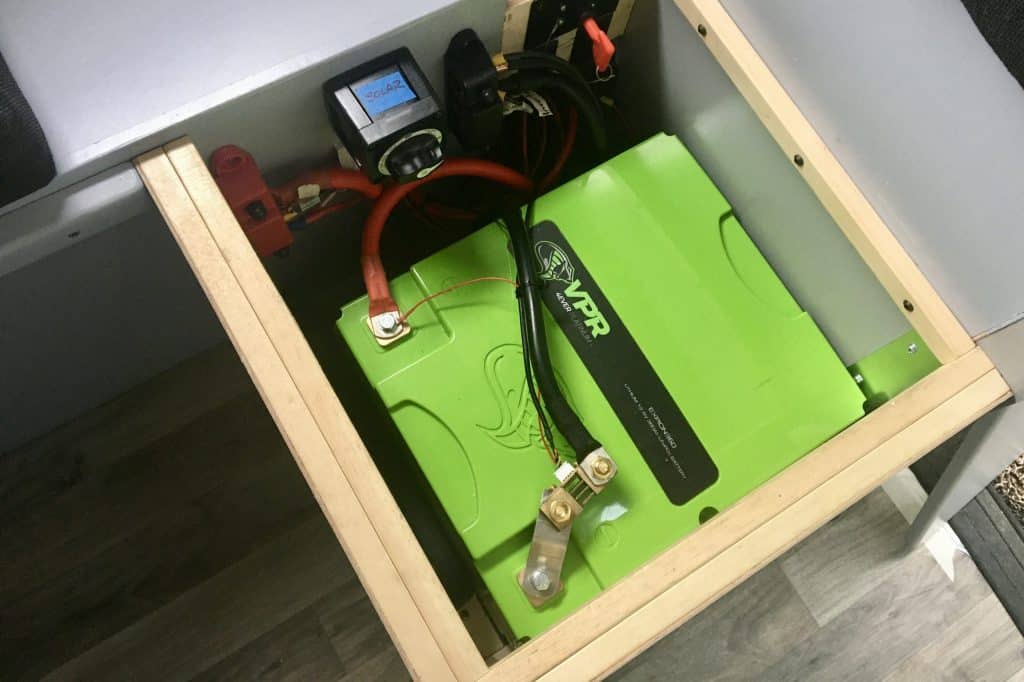
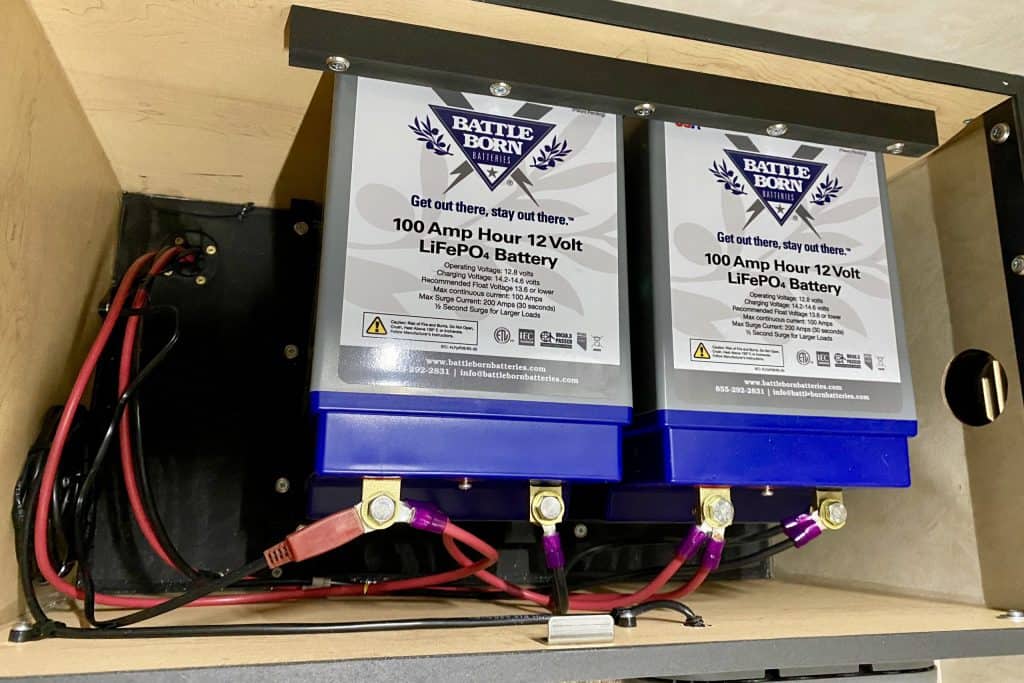
In a truck camper, battery charging is usually done with the use of solar electricity, the vehicle’s alternator, and a 110 volt AC converter-charger that is either driven by shore power or by a generator.
Lithium takes 14.6 volts to charge, as opposed to 14.4 volts for lead-acid batteries.
It’s crucial to utilize the appropriate settings on each charger for the battery type to prevent over-voltage damage and get a good, complete charge since the time and voltage requirements vary depending on the battery chemistry.
This implies that each battery charger in your camper has to have a setting for LiFePO4 or be designed particularly for lithium batteries.
Another setting just won’t provide the voltage required to charge the battery adequately.
There are several significant variations in the charging profile employed by lithium and other batteries.
Bulk, absorption, and float are the three basic charging phases needed to effectively charge a lead-acid battery.
Additionally, sulfation is avoided by using a lead-acid equalization and maintenance step.
This is not the case with lithium, which only needs two stages: a bulk charge up to 95–97% SOC and a brief absorption charge lasting 10–15 minutes for the last 3–5% SOC.
The extra float and equalization phases are not necessary since lithium does not sulfate.
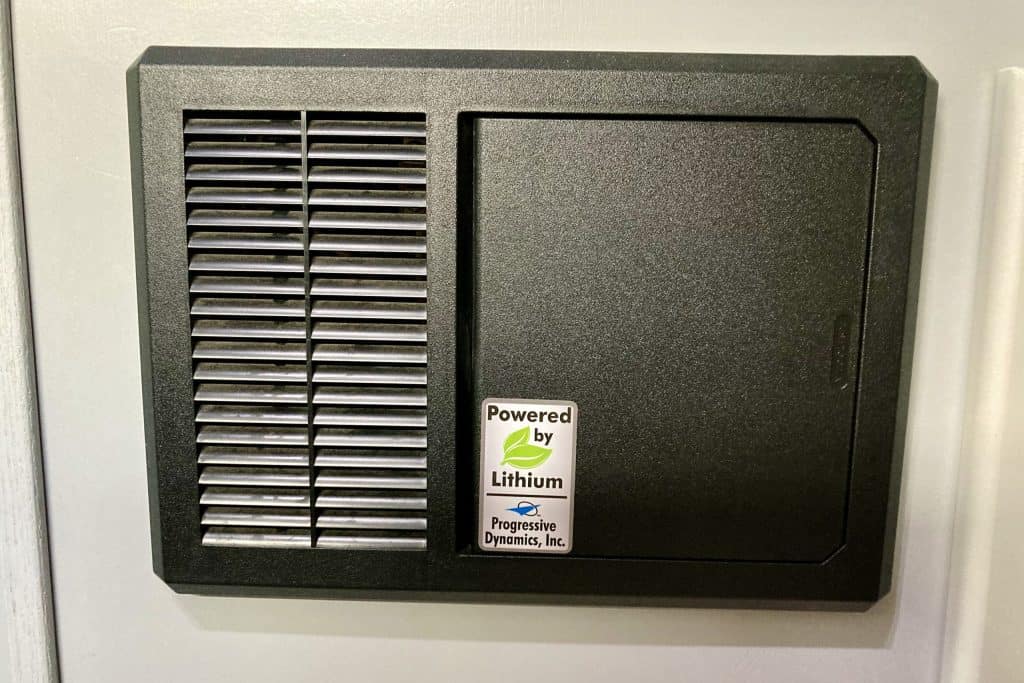
Lithium, however, has another crucial distinction when it comes to charging: the custom of keeping lithium topped-off or “trickle charged” at 100 percent SOC.
Simply said, you shouldn’t do it.
This is because fluctuations in ambient temperature during storage may cause lithium to become “stressed.” At actuality, a lithium battery should be stored in its optimal state of charge (SOC), which is when its open circuit voltage is between 40 and 80 percent of its maximum capacity, or around 13.1 volts.
Unlike lead-acid batteries, which incur “health” problems when obtaining a partial charge or while being kept with less than a full charge, lithium batteries have a minimal monthly self-discharge rate of 1 to 2 percent.
So what’s the final word? Stop topping up your lithium batteries for extended periods of time at home or in an RV park; you’re definitely harming it.

The amount of amperage, as with any rechargeable battery, has a significant impact on how rapidly a lithium battery recharges.
Lithium may be charged at a considerably greater rate than lead-acid, as we already discussed.
This is brought on by lithium’s decreased internal resistance.
In contrast to lead-acid, which is restricted to a “bulk” charge rate of no more than.3C or 30 percent of the battery capacity (30 amps for a 100 amp hour battery), followed by an absorption phase that can take even longer, lithium can be “bulk” charged at.8C or 80 percent of the battery capacity (80 amps for a 100 amp hour battery).
One reason some owners of lithium batteries installed bigger, more potent AC battery chargers, such as a 60 or 80 amp unit, was due to this.
It’s also the reason why so many people have solar panels on their rooftops.
The lithium battery needs a DC-to-DC charger for either smart or conventional alternator charging.
The DC-DC charger not only separates the vehicle battery from the camper house battery but also offers the 14.6 volts and charging profile needed for LiFePO4 charging.
To transmit a sufficient charging voltage at the lengths seen in truck campers and RVs, the conventional 10-AWG is too tiny.
Heavy-gauge wire, such as 6 AWG or higher, is required to achieve a suitable charge.
The camper’s connection to the vehicle will also need an Anderson plug or an equivalent.
Regarding the charger’s brand, we suggest any reputable LiFePO4 DC-DC charger produced by Expion360, Victron, Redarc, or Renogy.
When designing your circuit, we advise utilizing a minimum charger rating of 25 amps/6 AWG; however, you may use a second alternator to reach larger charge ratings.
These and other concerns are covered in much more length in Steve Hericks’ essay on lithium and alternator charging.
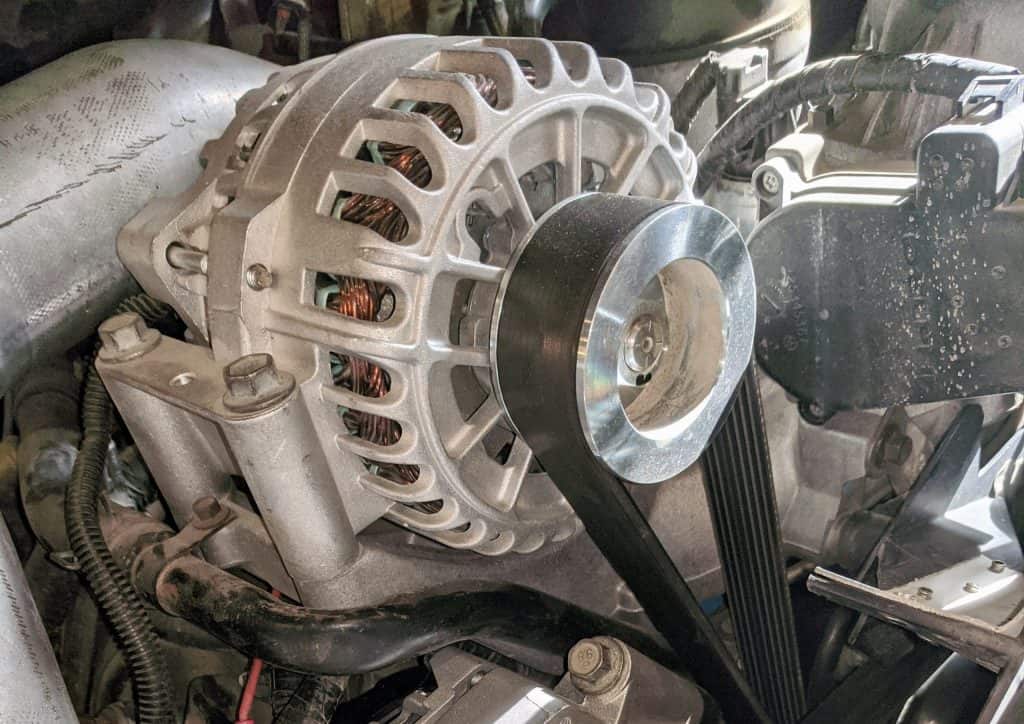
The Following Factors
Can a 90 amp hour lithium battery be connected to, let’s say, a 160 amp hour lithium battery from a different manufacturer? You may, but not if their chemistries vary, i.e., you cannot connect a LiFePO4 battery with a voltage of 12 volts to a LiMn2O4 battery.
It is acceptable to connect two batteries of the same chemistry in parallel of different sizes, but each battery will contribute to the load proportionately rather than equally.
For example, the 90 amp hour battery will contribute 36% of the amperage, while the 160 amp hour battery will contribute 64%.
Of course, anybody who enjoys boondocking needs a reliable battery monitoring device.
The SOC of your lithium battery can only be ascertained in this manner.
A decent battery monitor will show the battery’s current voltage and the number of amps being utilized right now in addition to the SOC.
We check the condition of our battery using Expion360’s battery meter, but any battery monitor, such as those provided by Xantrex, Victron, or Bayite, will work.
All of these expensive monitors use a shunt, a tool that gauges the amount of amperage flowing into and out of the battery’s negative terminal.
When you are off-grid camping, you want the gadget to report events in real time.
Final Reflections
Going lithium is a really wise investment, but only if you camp far from the grid often.
Going lithium would be a complete financial waste if your idea of truck camping entails bouncing from one RV campground to another.
Purchasing a few lead-acid AGM batteries will be more beneficial if you want to keep the lights on in between stops.
Going lithium, though, makes a lot of sense if boondocking is your preferred method of travel.
But as we’ve just said in this post, there are a few things to be aware of before making the purchase; otherwise, you can lose out on a lot of the advantages that the lithium battery offers.
If you still have any questions or concerns, as usual, refer to the manufacturer’s instructions that were included with your battery.
